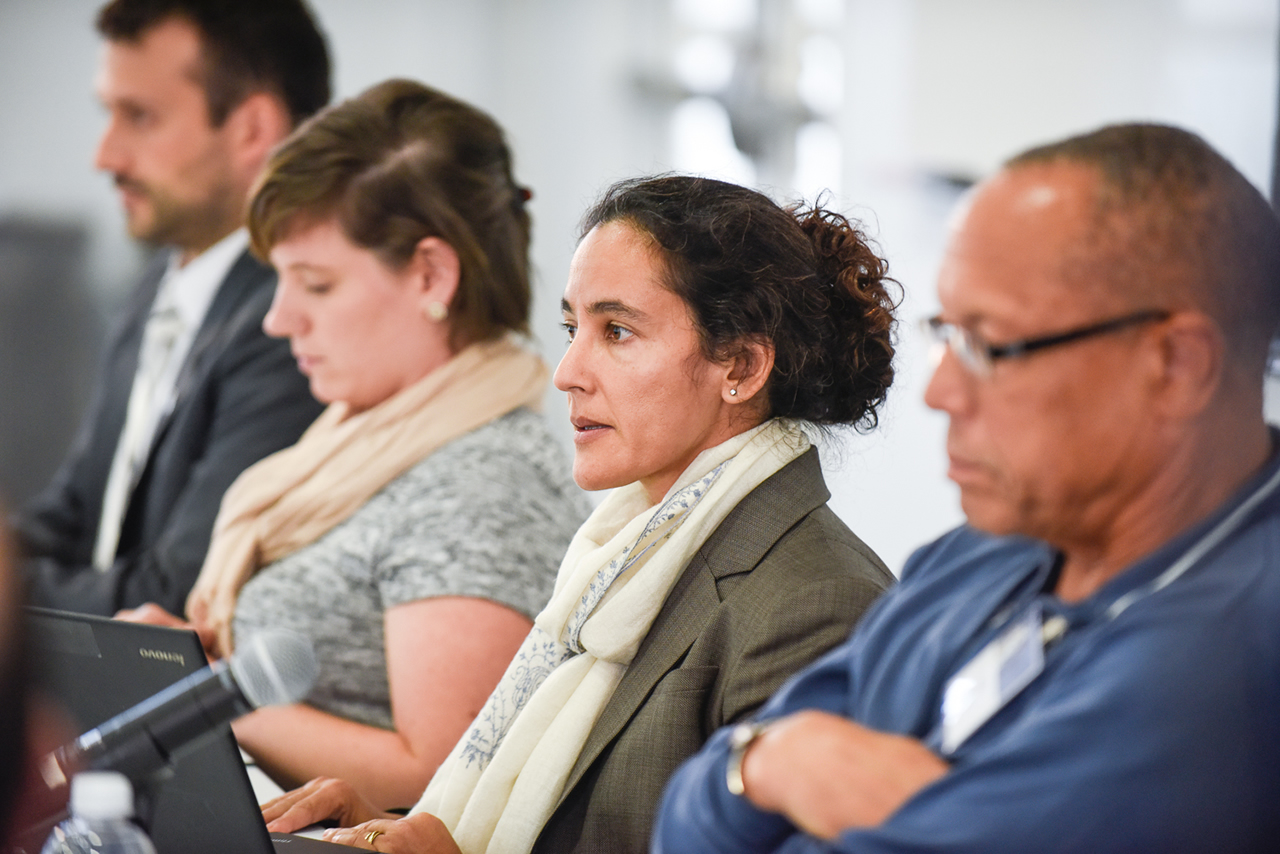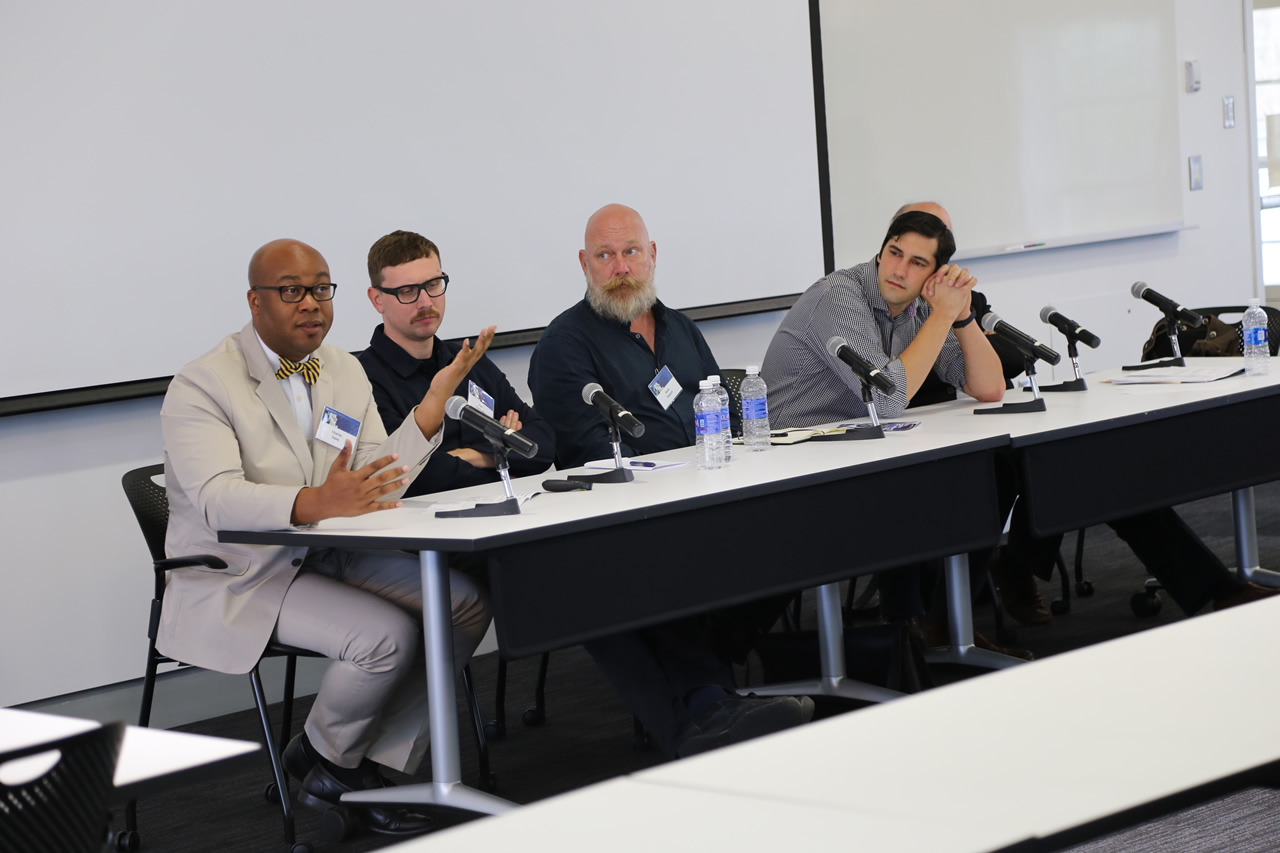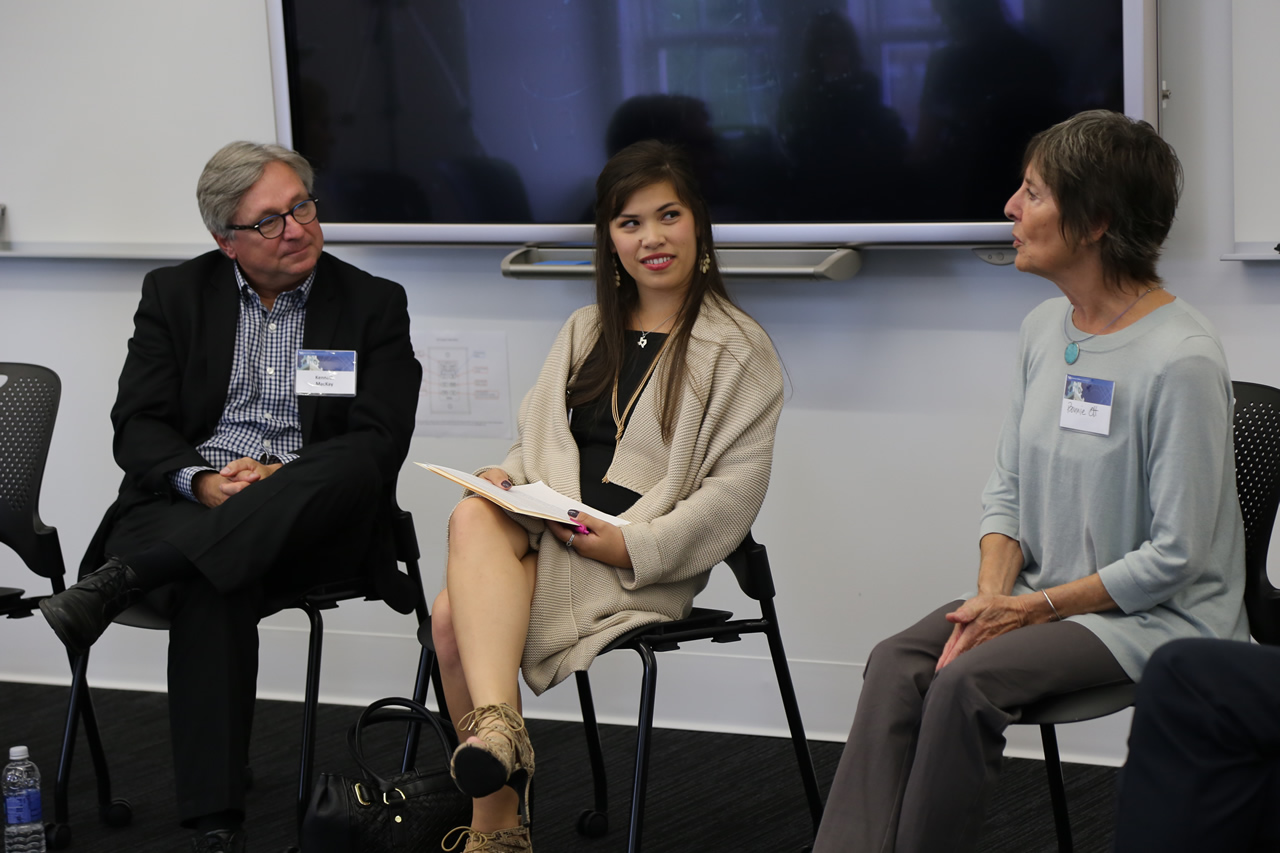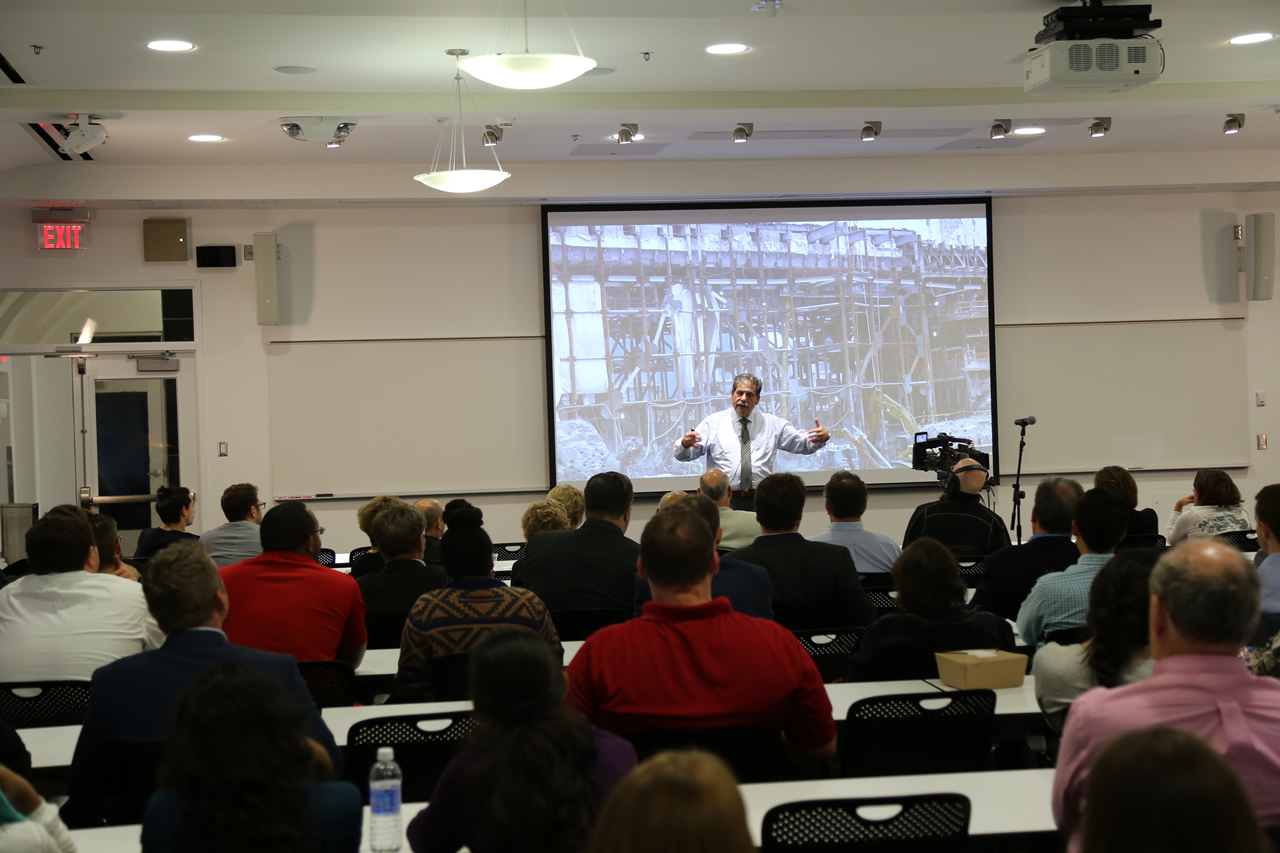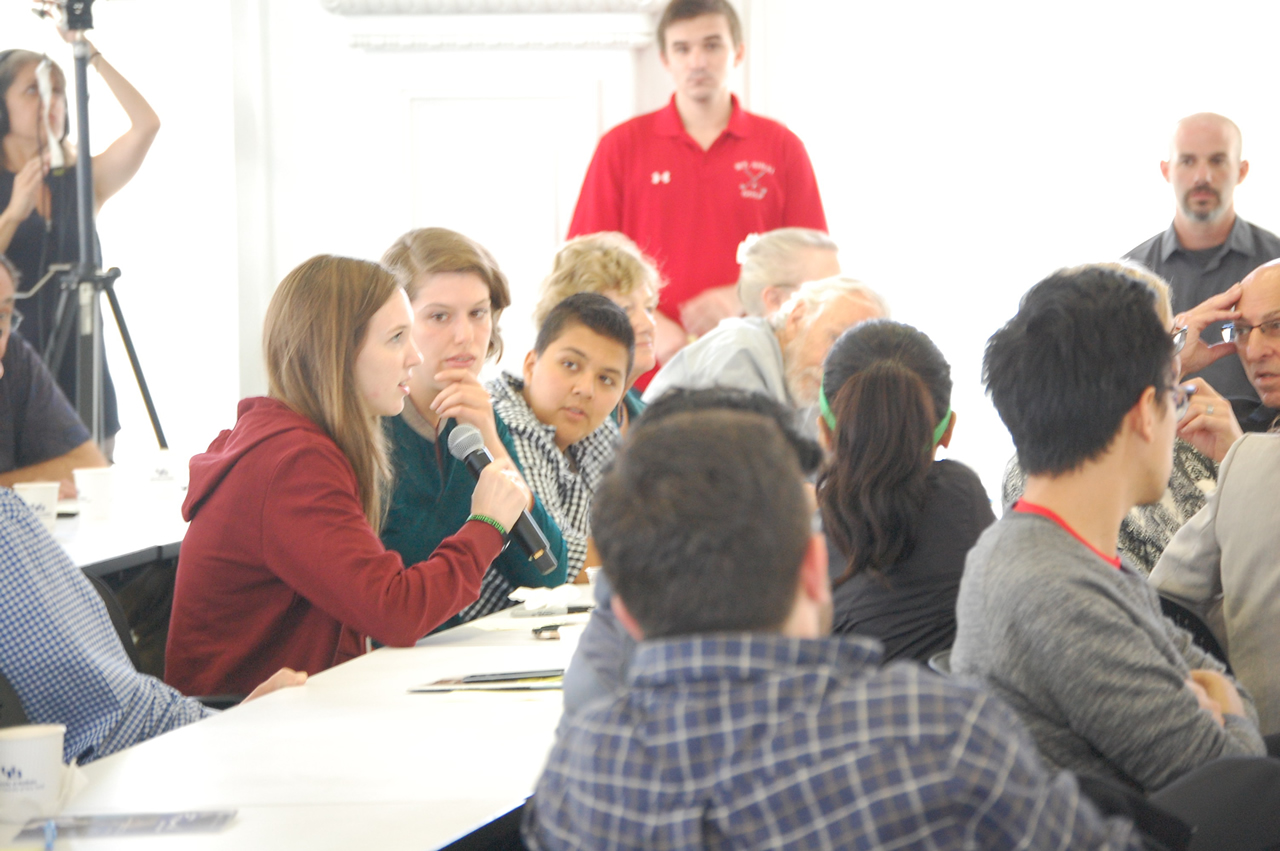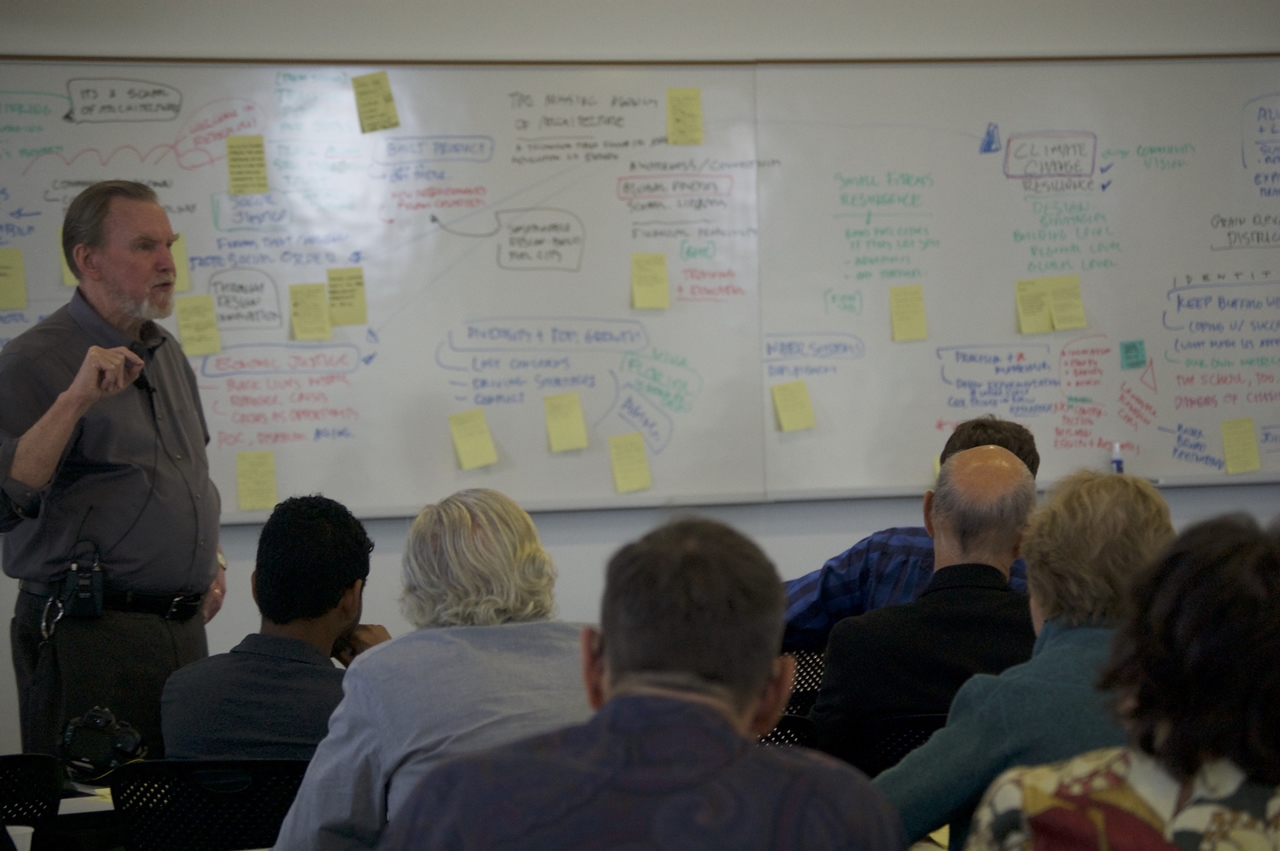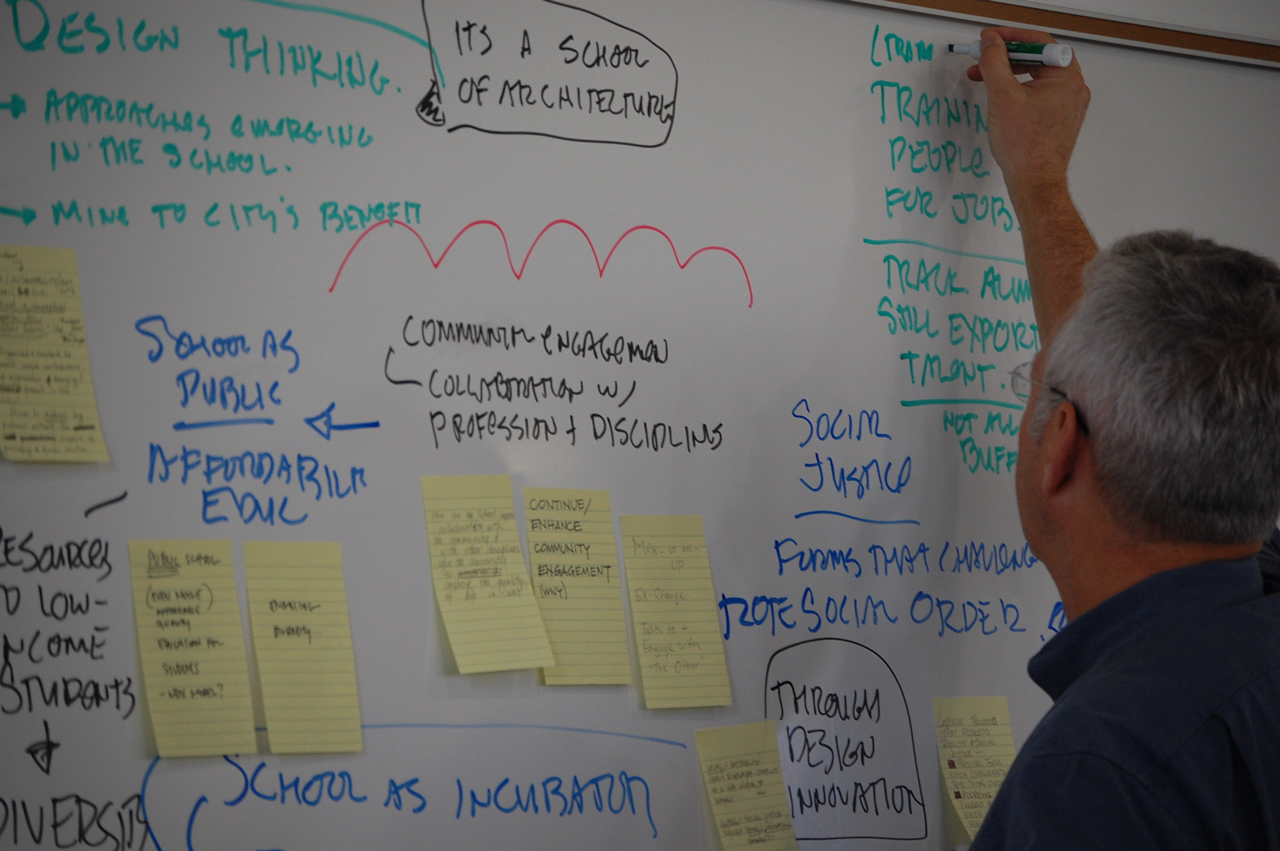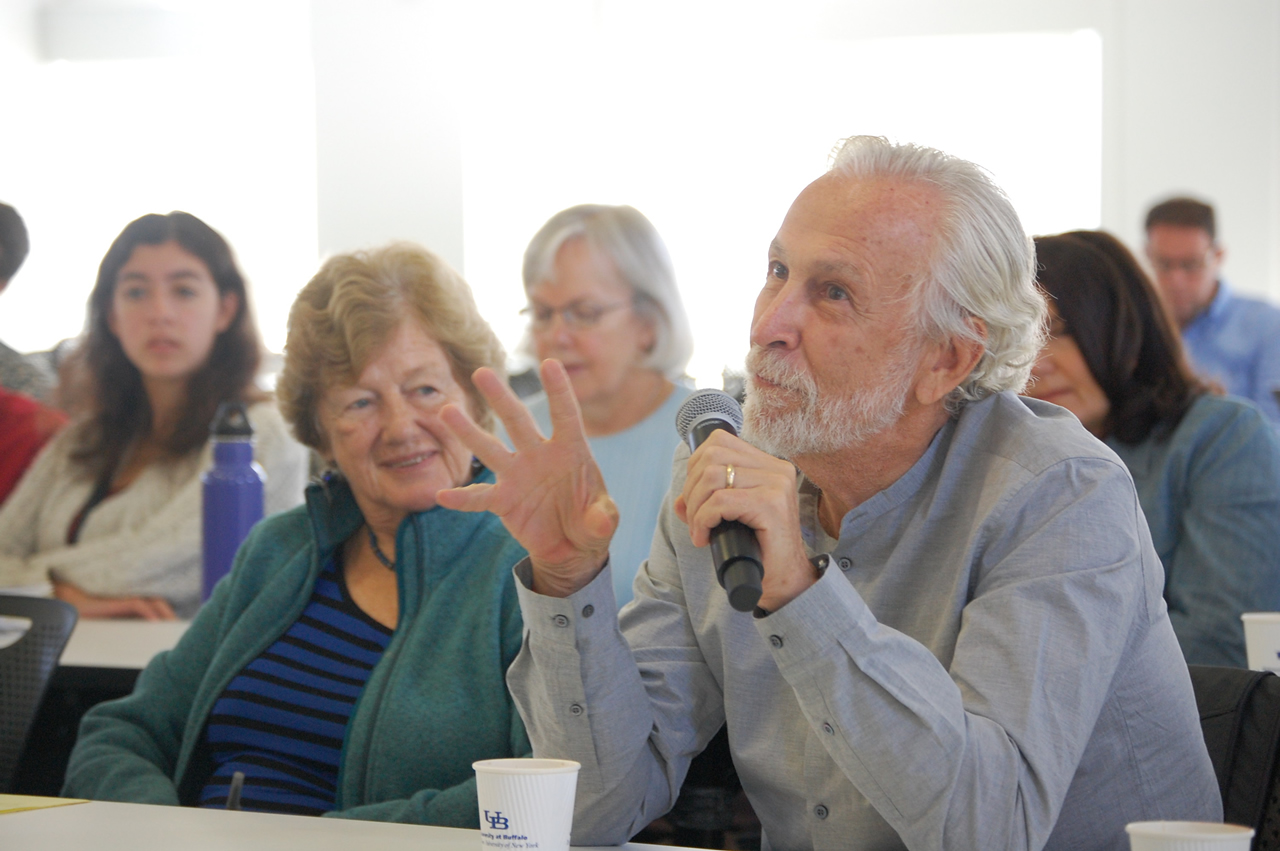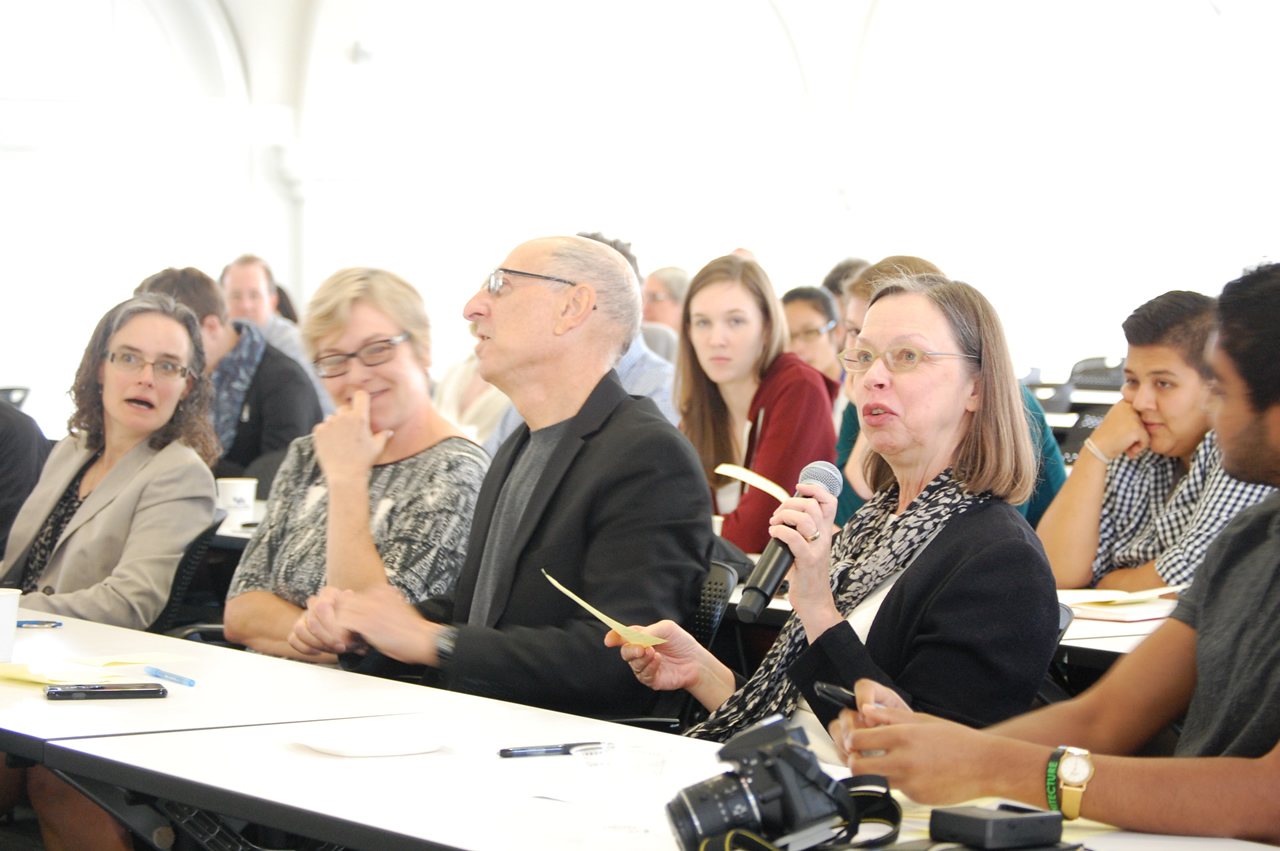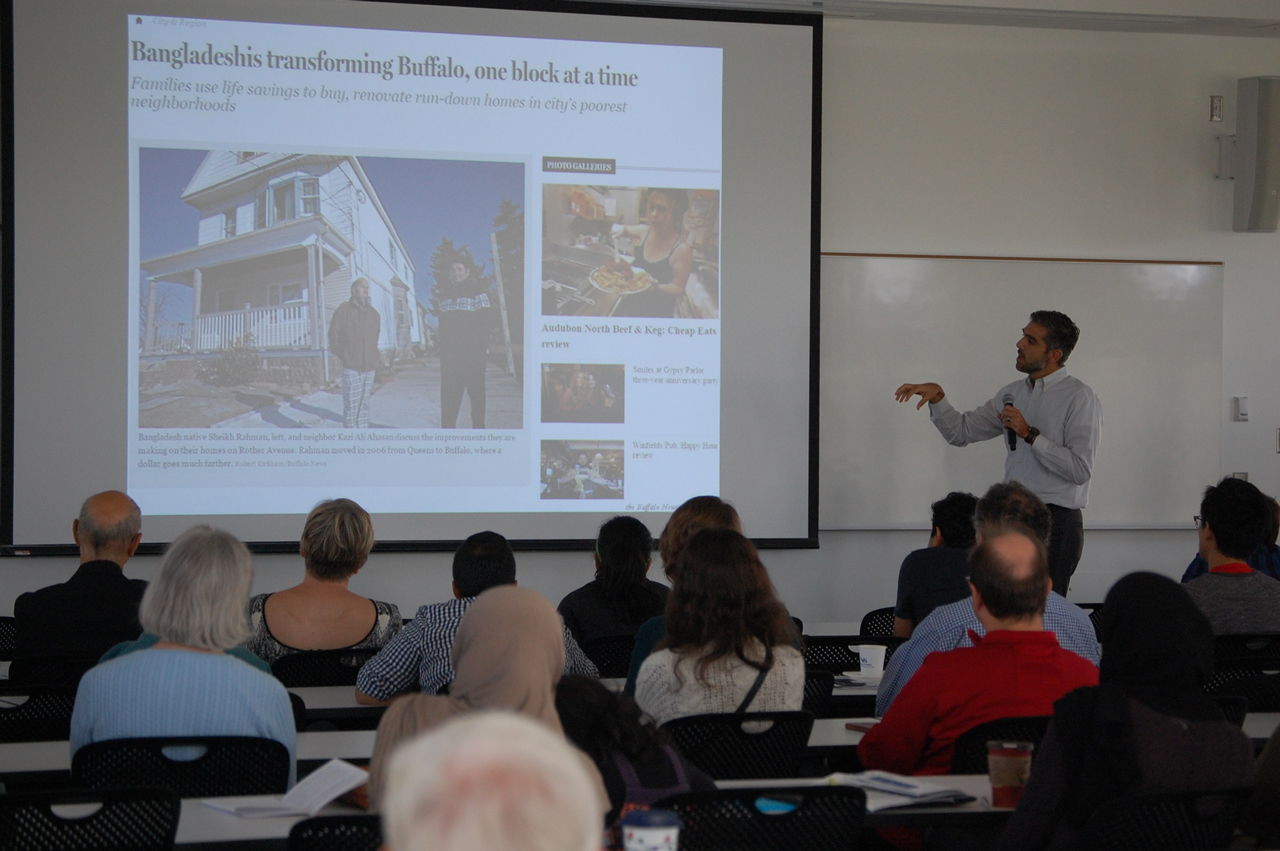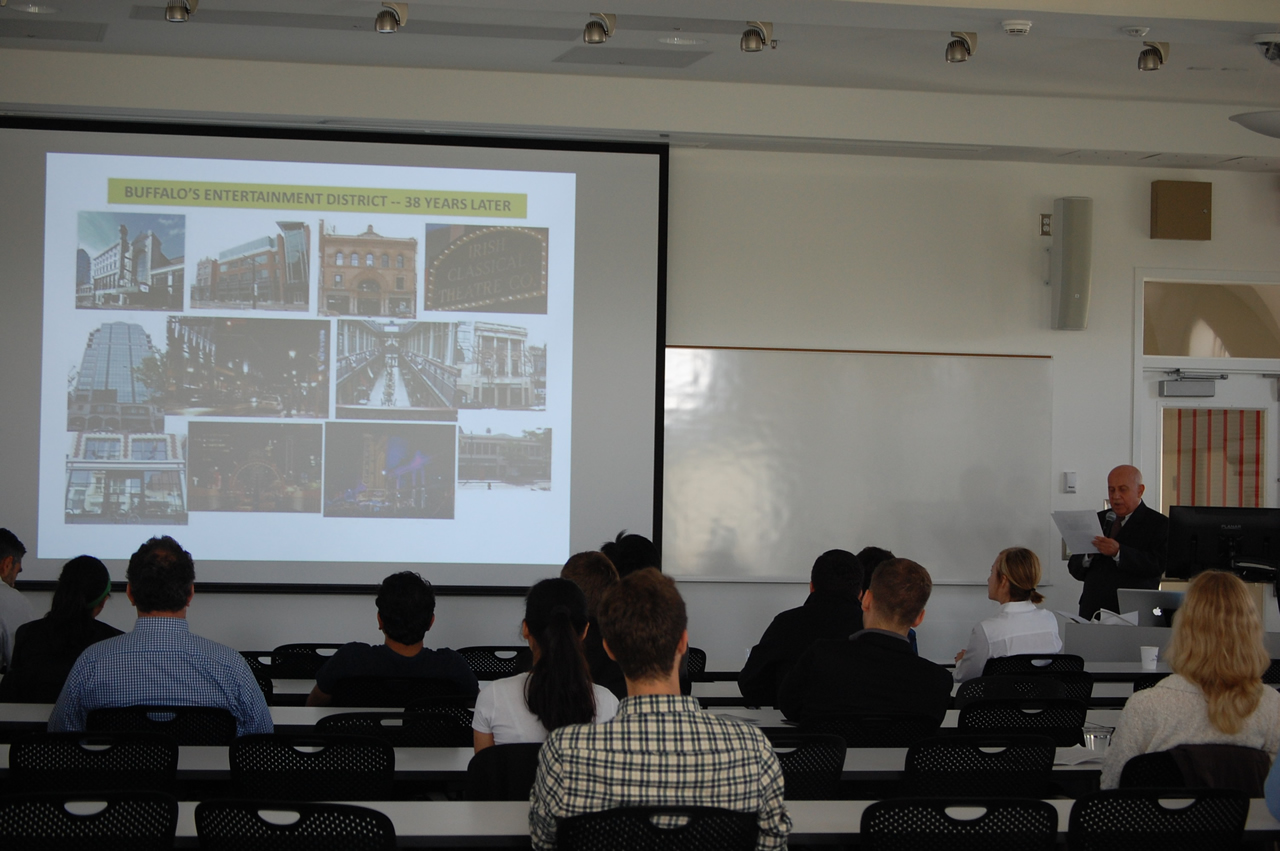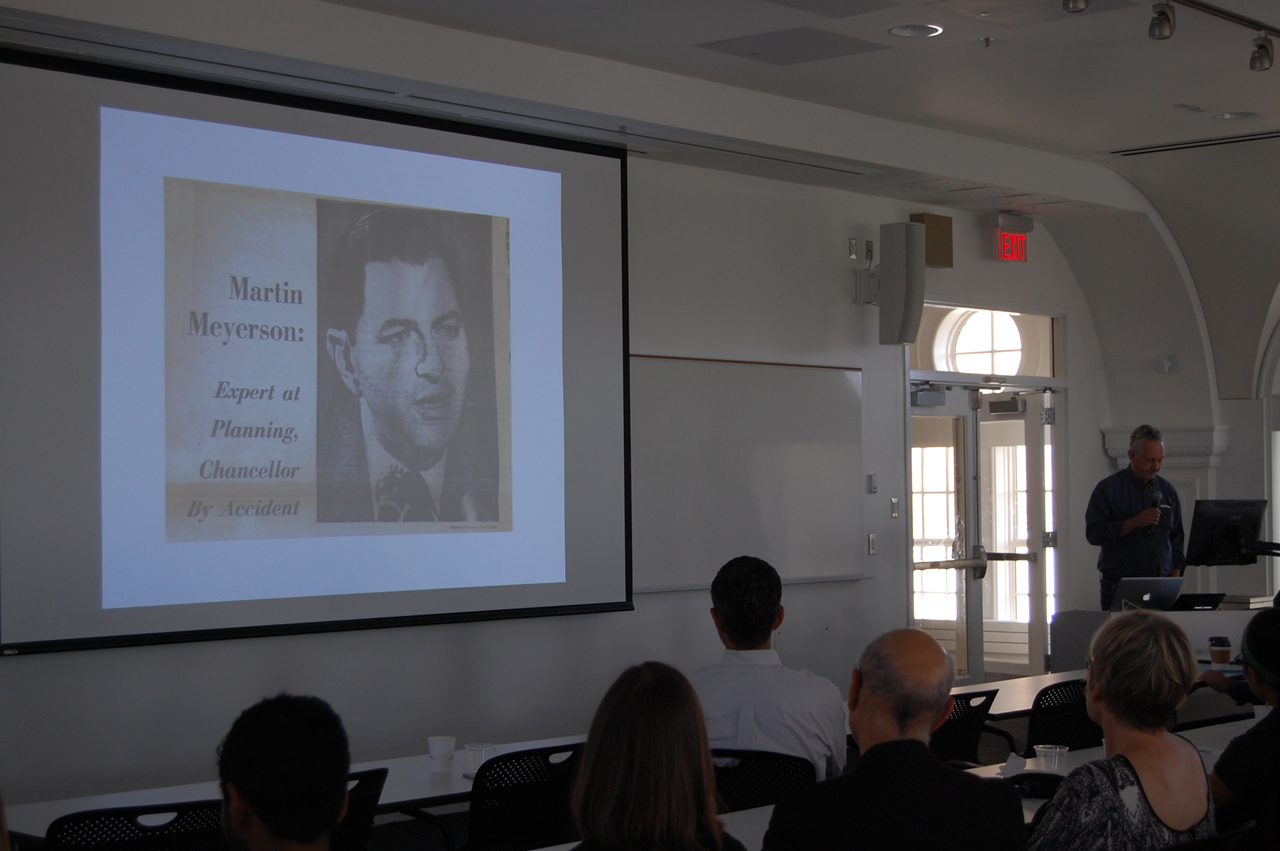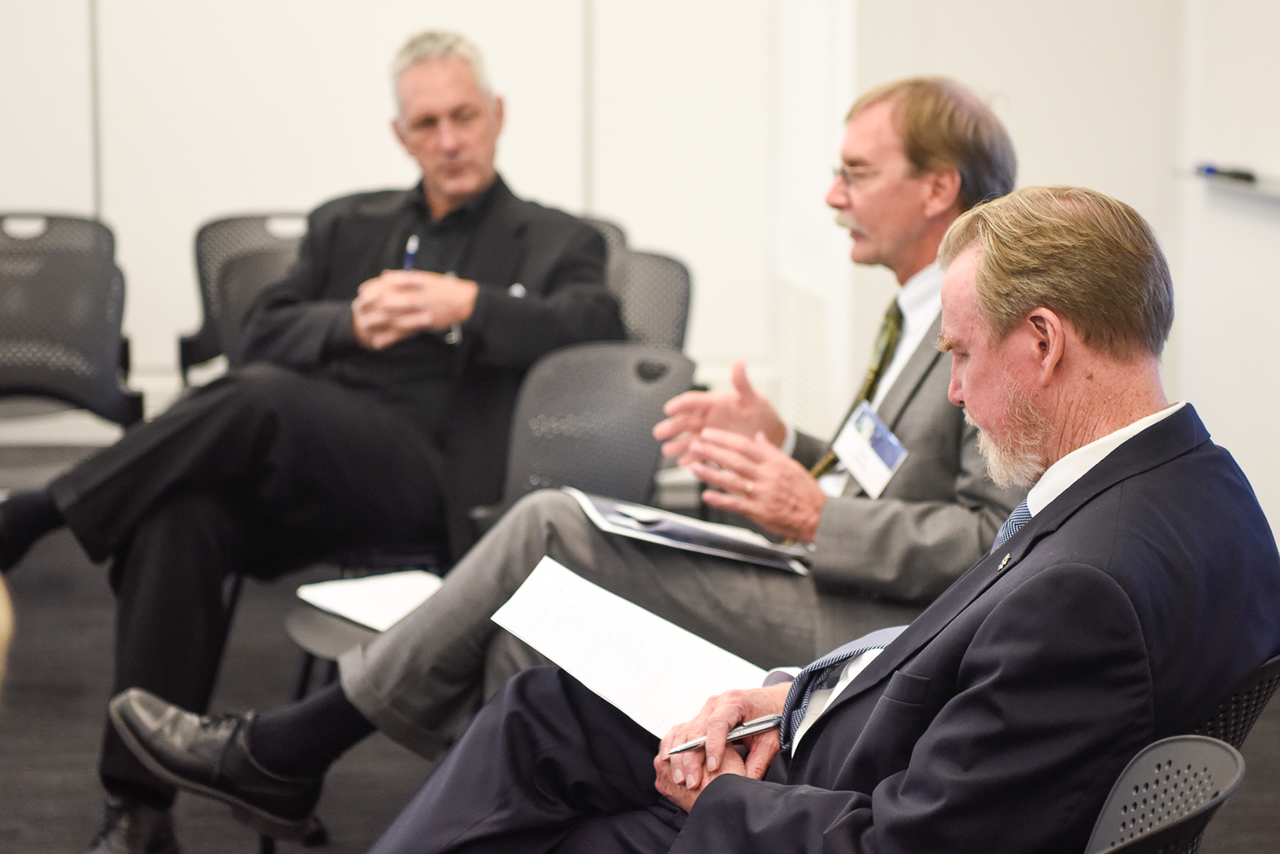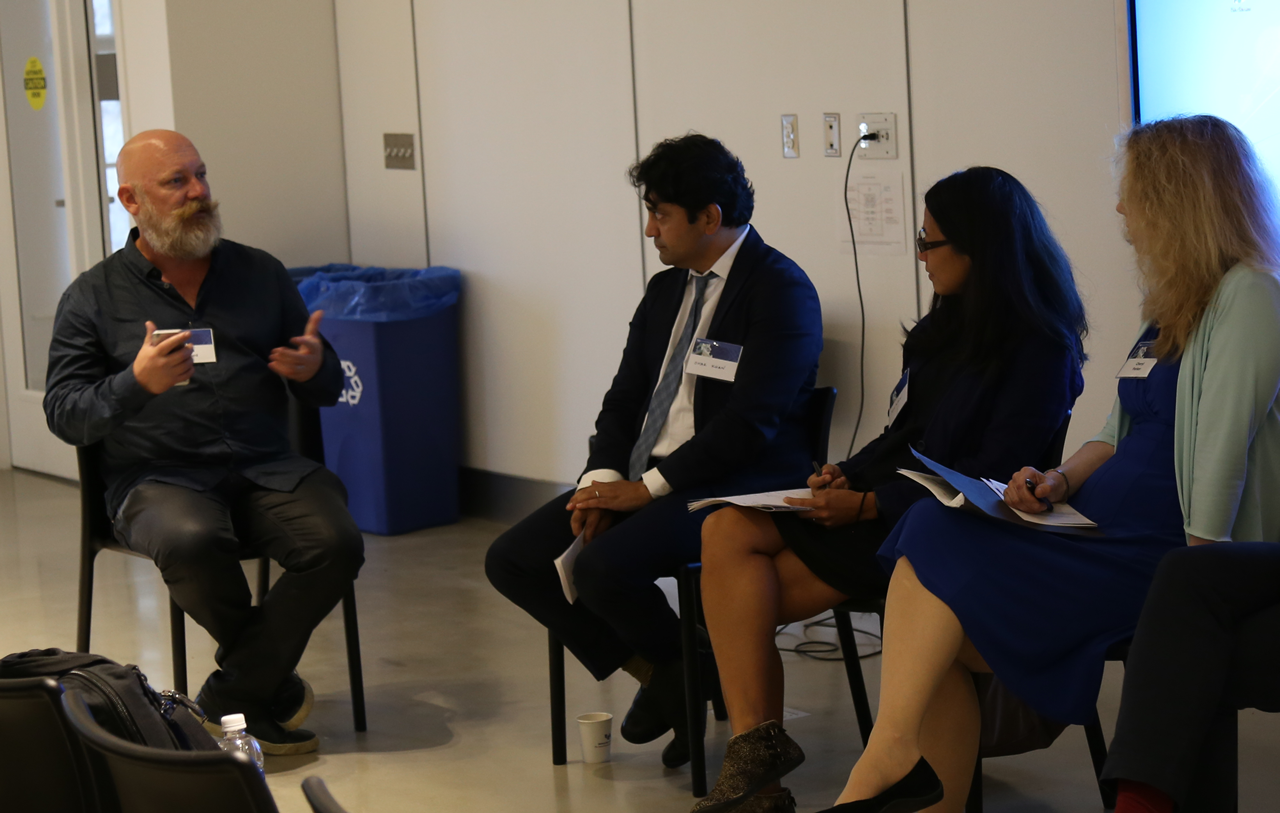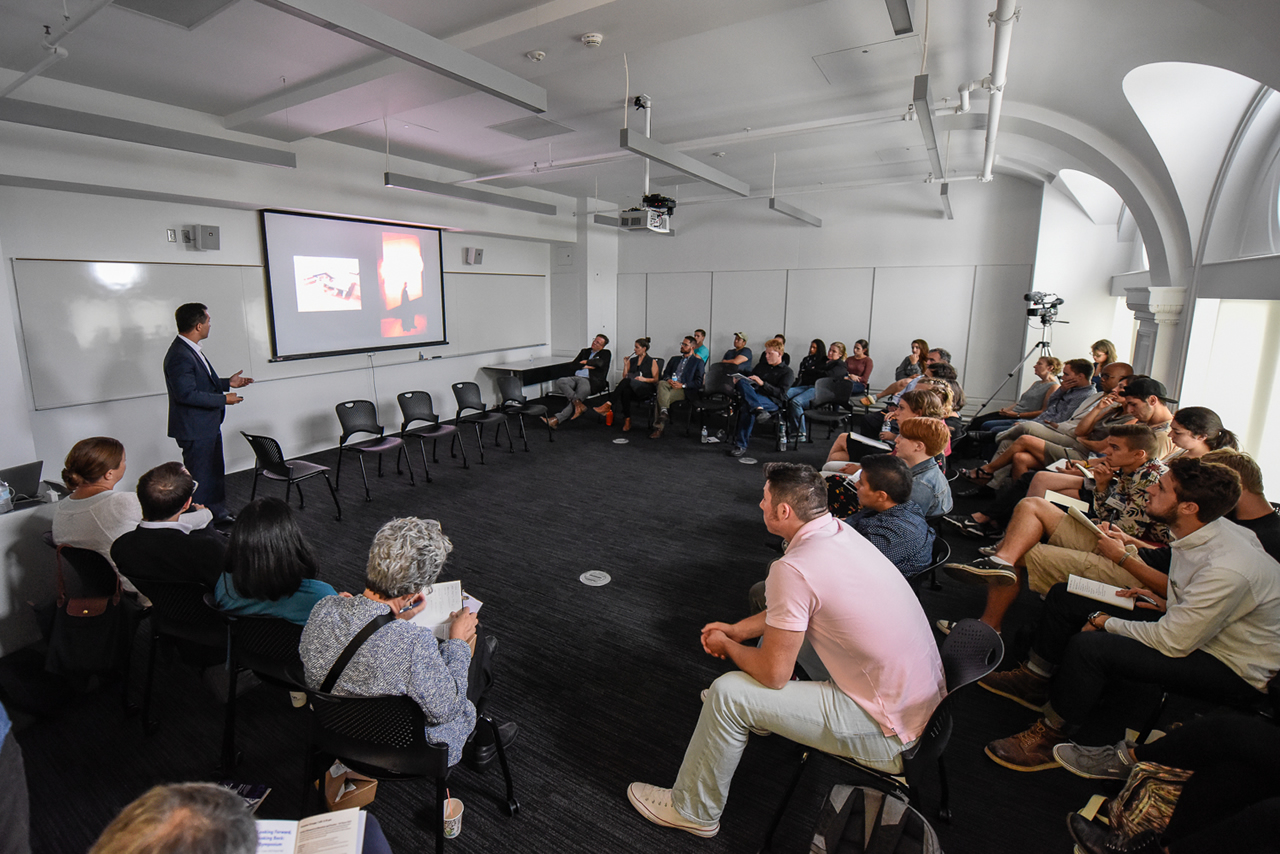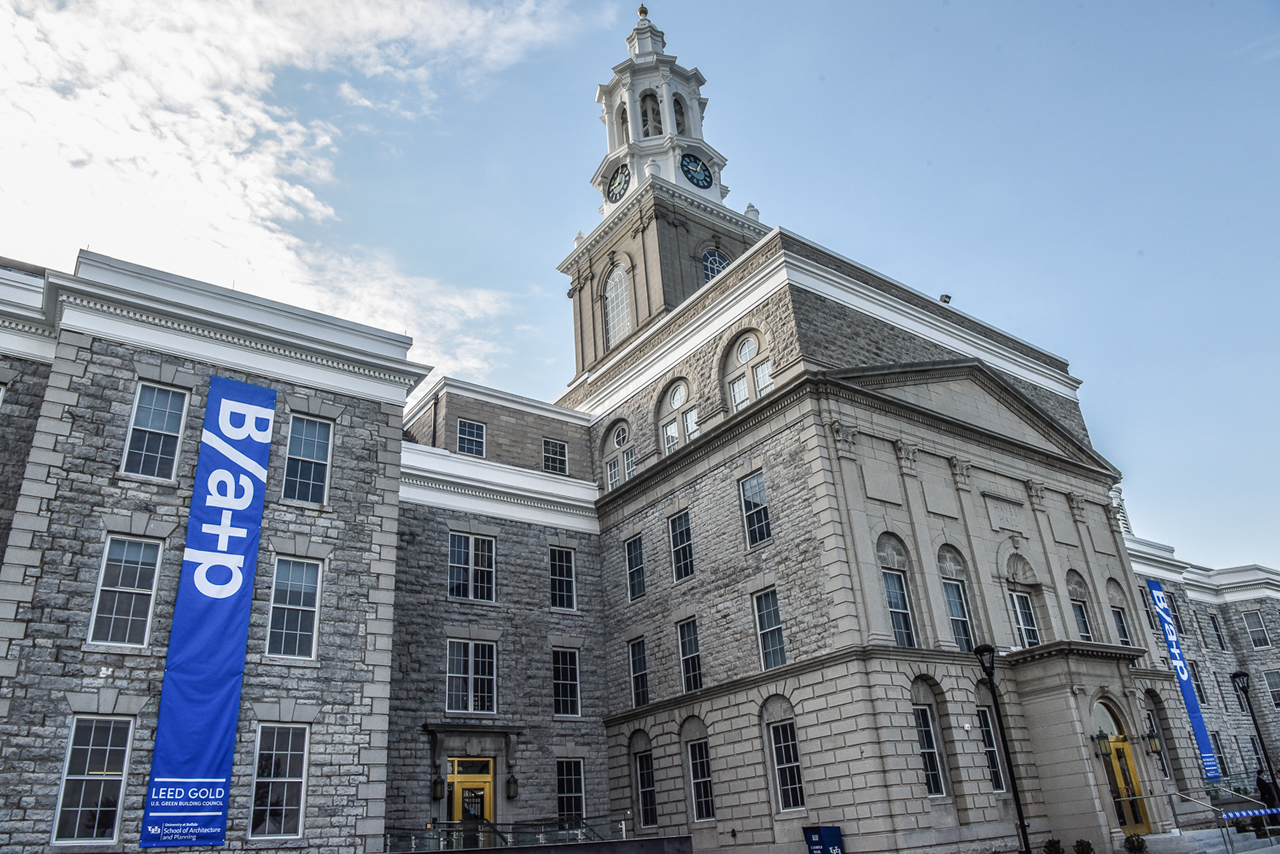
Looking forward, looking back
Across the eras, school celebrates legacy, considers the journey ahead
Re-Post From UB The School of Architecture and Planning – Latest News
There could be no better setting than the bright, day-lit spaces of the new Hayes Hall – its walls covered with the latest work of our faculty and students – for graduates across five decades, friends in the community and professions, and current faculty, staff and students to come together in celebration of the work we do.
A series of events lined the program in honor of the legacy of the ‘School of Architecture and Environmental Design,’ formed our of the tumult of the late 1960s to approach design through systems thinking and in relationship to broad societal dynamics.
Throughout the two-day event, as much as we mingled and reminisced, we projected on questions of persistent relevance to education and practice in architecture and planning. With the diverse gathering of our school community a telling indicator of this potential, we considered what’s possible if we work together – across academia and practice and with new energy and focus – to bring our professions to bear on the pressing problems of our time, from climate change and social justice to the problems of our prevailing metropolitan structure.
Importantly, this was only the start of a conversation. Over the next three years, we will mark a series of three 50th anniversaries: the founding of our school by the State University of New York (1967), the hiring of the school’s first dean and faculty (1968), and the convening of its first class of students (1969). Such milestones in the history of our school are certainly causes for celebration and recollection.
More than anything, however, we’ll be looking forward with you, our colleagues, former students, partners in the community and professions, to mobilize a new agenda for the School of Architecture and Planning. What are the problems we face as a region, nation and planet in which architecture, planning and allied professions have an important role to play? How can new alignments across the school and its public audiences – from alumni and practitioners to community stakeholders – drive change around these issues? What questions – and which constituents and partners – are missing from this conversation?
- Samina Raja, associate professor of urban planning, participated in a panel discussion on ‘Designing and Planning for Equity.’ The symposium included six breakout sessions on questions of persistent relevance to education and practice in architecture and planning.
- Architecture professor Hadas Steiner (not pictured) led a discussion on criticism and discursive practices with (from left to right) Charles Davis II (MArch ‘02; BPS ‘99) of UNC-Charlotte; Curt Gambetta, UB’s 2011-12 Peter Reyner Banham Fellow; Mark Shepard, UB architecture and media study professor; Adam Levin of Litelab Corp.; and David Perry of the Great Cities Institute.
- Participants in our panel discussion on International Experiences in Design Education included (from right to left) Bonnie Ott, professor emerita of architecture, urban and regional planning PhD student Camden Miller, and architecture professor Kenneth MacKay.
- The Hayes Hall auditorium was at full capacity for Michael Garz (BA ’72), who offered his account of ‘Rebuilding Ground Zero’ as design manger of the World Trade Center Transportation Hub.
- A student offers her thoughts on future possibilities for the school during the community forum.
- Dean Robert G. Shibley facilitated the conversation with alumni, faculty and students, inviting participants to share their sense of priorities for discussion with the full group.
- Bradshaw Hovey documents the conversation, the start of an important dialogue with the broader school community as we mark 50 years since the program’s formation.
- Participants in the forum reflected on priority issues for the professions and our world, from climate change to social justice to the problems of our prevailing metropolitan structure.
- A community conversation on the future of the school invited alumni, faculty, students and partners to consider how we can work together to set a direction and agenda for the next 50 years.
- Architecture professor Erkin Ozay presents ‘Housing Buffalo’s New Americans’ for the PechaKucha event.
- Frank Palen, part of an urban design studio led by Dean Emeritus Harold L. Cohen on Buffalo’s Entertainment District, presents at the PechaKucha event.
- Bradshaw Hovey discusses the Seneca-Salamanca Leasehold Study, one of the first projects undertaken by the ‘School of Architecture and Environmental Design.’ The presentation was one of seven short-format vignettes delivered as part of a special edition PechaKucha event.
- From left to right: Bradshaw Hovey (MUP ’91), research associate professor of urban planning, moderates a session on ‘Project Work in Education and Service’ with Gary Jastzrab (BA ‘76), director, Philadelphia City Planning Commission, and Dean Robert G. Shibley.
- Mark Shepard (left), associate professor of architecture and media study, moderates a discussion on the ‘Expanded Practices’ of architecture with (from left to right) architecture faculty members Omar Khan and Joyce Hwang, and alumnus Cheryl Parker (BAED ‘87), CEO of The Urban Explorer.
- The breakout session on ‘A Culture of Making’ addressed the school’s design/build ethos and its generation of contemporary innovations in material behavior and performance.

